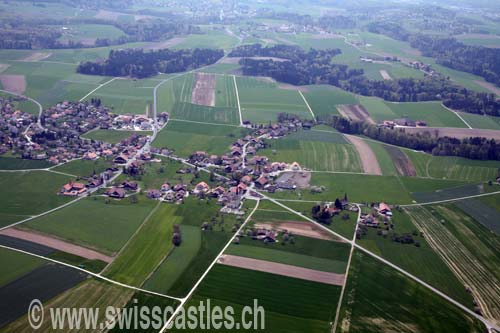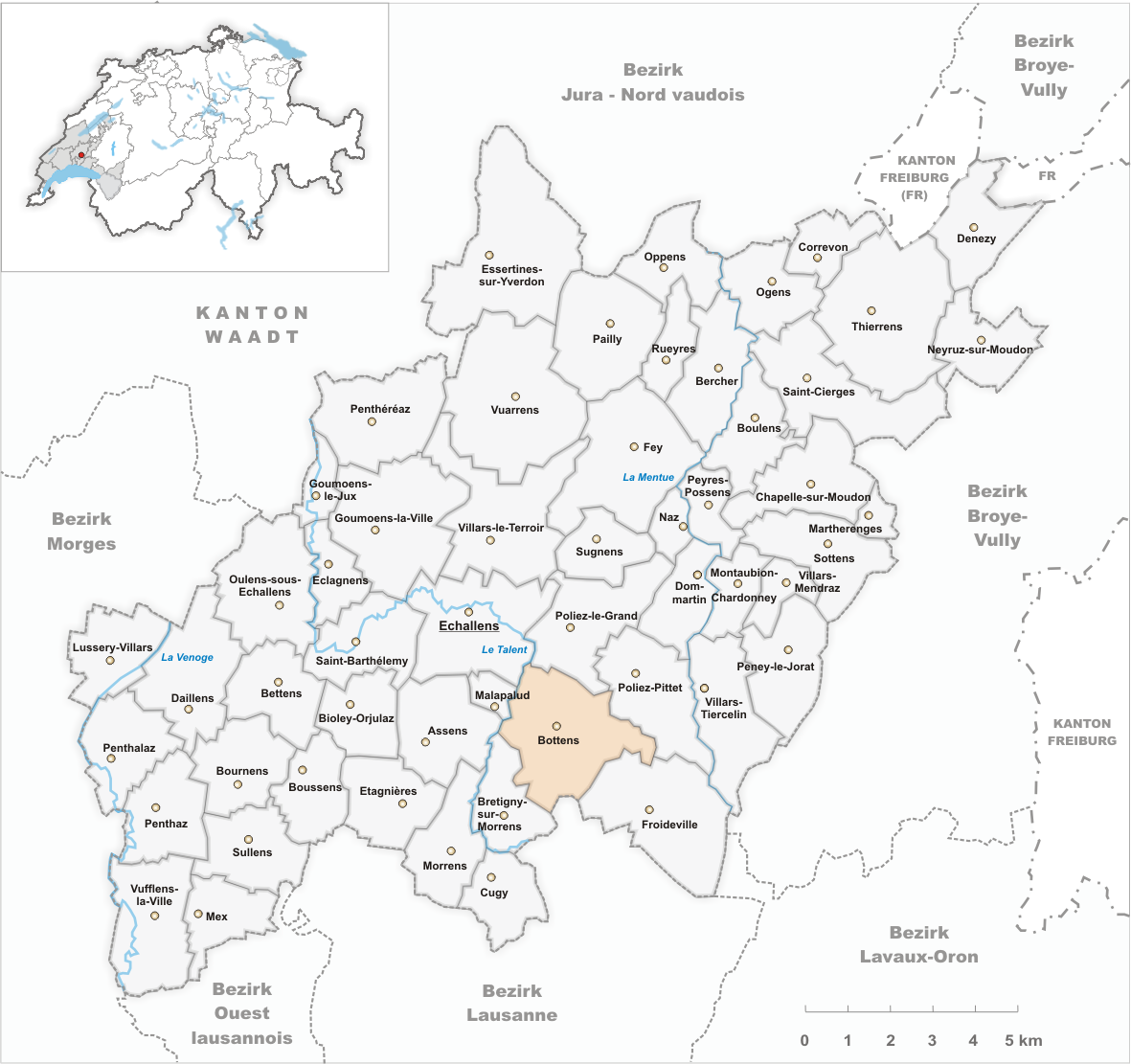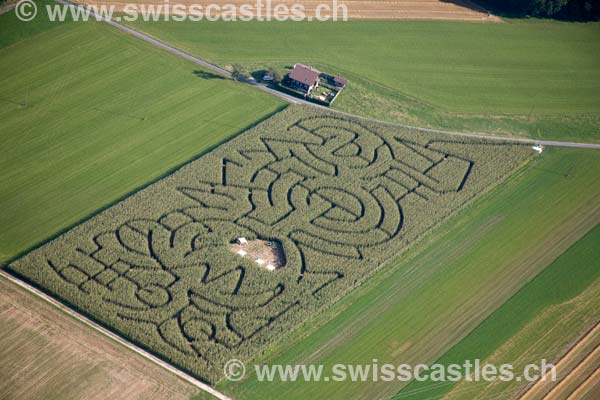Bottens
Municipal House Bottens
Bottens is a municipality in the district of Gros- de -Vaud in the canton of Vaud in Switzerland.
Geography
Bottens is located on 730 m above sea level. M., 3 km southeast of Echallens and 12 km north of the canton capital Lausanne ( straight line ). The village is located on a high plateau east of the talent in the eastern Gros de Vaud, on the north western edge of the heights of the Jorat, in the Vaud Mittelland.
The area of 6.8 km ² large municipality area includes a portion of the high plateau in the central Vaud Mittelland. The western boundary is the valley of talent to the flow of the streams Bottens Posat and Combron. In the wooded valley of the latter, the southwestern border is. To the east of the municipality of soil on the plateau of Bottens, the forest height Planche Riande extends ( 783 m above sea level. M. ) and the headwaters of the Coruz ( in the catchment area of the Mentue ) up to the height of La Carnacière, on 848 m above sea level. M. the highest elevation of Bottens is achieved. From the municipality surface 1997 7 % was attributable to settlements, 19 % of forest and woody plants and 74% to agriculture.
To Bottens include Hofsiedlungen Chalet Curial ( 755 m above sea level. M. ) south of the Planche Riande, Mandou ( 753 m above sea level. M. ) in the headwaters of Coruz, Grands Troncs (830 m above sea level. M. ) on the high plateau of the Jorat and numerous farmsteads. Neighboring communities Bottens are Echallens, Poliez -le- Grand, Poliez -Pittet, Froideville, Lausanne, Epinay -sur -Morrens and Assen.
Population
With 1176 inhabitants ( 31 December 2012) Bottens one of the smaller municipalities in the canton of Vaud. Of the 93.0 % inhabitants are French-speaking, German-speaking 3.3 % and 1.2 % portugiesischsprachig (as of 2000). The population of Bottens amounted in 1850 to 464 residents in 1900 to 422 inhabitants. Since 1970 (424 inhabitants), a rapid population increase was observed with a doubling of the population within 40 years.
Economy
Bottens was until the mid 20th century a predominantly coined by farming village. Today, farming, fruit growing and cattle breeding have only a minor role in the occupational structure of the population. In the 18th century a brick factory was operated in Bottens. Since the late 1970s, new companies set up operations in the city, including among builders, a mechanical workshop and a horticultural business. In recent decades, the village has developed into a residential community. Most workers are therefore commuters who work mainly in the Lausanne area.
Traffic
The community is conveniently technically quite well developed. It is located on a link road from Lausanne to Thierrens. Bottens 60 (Lausanne Froideville ) of the Transports publics de la région Lausannoise is served by the bus route. Furthermore Bottens also has a post bus connection with Echallens.
History
The first written mention of the village was carried out in 1142 under the name Botens. Later, the names Boctens ( 1228 ), Bouteins ( 1380 ), Boutain ( 1381 ), Boutans ( 1397 ) and Boutan (1414 ) published. The name goes back to the Burgundian people named boto and means for the people of the Boto.
Since the Middle Ages Bottens belonged to the bishop of Lausanne, which gave the place the nobles of Bottens fief. By buying Bottens came to 1342 Girard de Montfaucon to the rule Echallens. As part of the Burgundian Wars, and after the Confederates had destroyed the castle, Bottens came in 1475 at the Bailiwick Orbe Echallens, which was under the general rule of Bern and Fribourg. The Reformation was in Bottens not prevail, so the community was a mixed parish with a majority of Catholics. After the collapse of the ancien régime Bottens belonged from 1798 to 1803 during the Helvetic Republic to the canton of Geneva, who came up then with the enactment of the Act of Mediation in the canton of Vaud. 1798 was assigned to the District Echallens.
Attractions
The mentioned already in the 12th century parish church belonged first to the abbey of Mont Heron. It was used by both the Catholics and by Protestants since the Reformation. In 1711 the church was rebuilt. It has frescoes of the Vaudois painter Louis Rivier (1943) and is a listed building. The new Catholic church was built from 1843 to 1847 and renovated in 2003. The village is characterized by farmhouses dating from the 18th and 19th centuries. The former castle of the 12th century gradually fell into disrepair over time to ruin, the last traces were removed at the beginning of the 20th century. Today, only the field name Le Château remembered on a farm on the site of the old manor.






.svg/100px-Blason_commune_CH_Bottens_(Vaud).svg.png)



